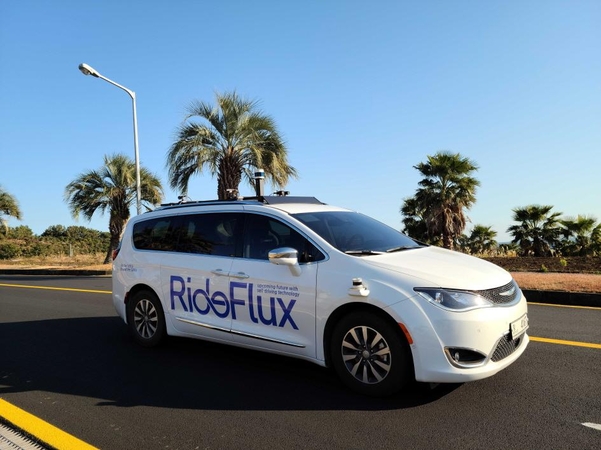Input 2021.01.05 15:22 | Revision 2021.01.05 15:24
Kakao, operated autonomous driving circulation shuttle in Sejong last December
Evaluation that it has risen to the next level enough to receive money and service
Only the route that is still set… Liability in case of accident, insurance, etc.
Competition for self-driving paid services in Korea is intensifying. Kakao Mobility introduced Korea’s first autonomous driving service in Sejong City in December of last year, followed by Socar’s autonomous driving service in the first half of this year. Following the enforcement of the Autonomous Vehicle Act in May last year, the road for passengers paid for transportation was opened with the designation of the’autonomous vehicle pilot operation zone’ in November, and the autonomous driving service, which was limited to free trial operation, has entered the commercialization stage.

Socar uses a minivan (Chrysler Pacifica) to service the 38km one way from Jeju Airport to Jungmun Complex. It can carry up to 5 people (including 2 carriers). This section is the longest of the six autonomous vehicle pilot zones selected by the Ministry of Land, Infrastructure and Transport. In Sejong City, serviced by Kakao Mobility, a pilot operation was allowed for about 23km. Kakao is serving 4km (maximum 2 passengers) of these.

An official from Socar explained, “Our service is unique in terms of operation time, frequency, and road complexity.” According to Socar, Ride Flux has provided free self-driving services more than 5,400 times in a 5 km round trip from Jeju Airport since May last year. Also, because Jeju Island has more frequent weather changes than other regions, Socar’s strength is that it has accumulated technologies, data, and operational know-how related to autonomous driving in various environments. Socar said, “The passenger rating during the service period reached 4.9 out of 5,” he said.
Kakao considers synergy with the Kakao T app, which has become a national mobility platform, as the advantage of this paid autonomous driving service. An official of Kakao Mobility said, “It can be used conveniently without the need to install a separate app.” In addition, through the know-how accumulated through taxis and navigation services, we can optimally guide dispatching, getting on and off points, and routes. The official said, “The reason we do not serve an unspecified number is because the number of vehicles is still limited rather than a technical problem,” said the official. “If this is enough, you can open it up for anyone to use.”
Socar autonomous driving pilot operation. /Socar, Ride Flux
A pilot operation of Kakao Mobility autonomous driving. /Kakao Mobility
Hyun-myung Kim, professor of transportation engineering at Myongji University (Director of Smart Mobility Research Center) said, “The autonomous vehicle market is still technically perfect in case the route changes according to passenger demand, the responsibility for legal problems such as accidents, insurance companies. There are still a lot of homework to be solved, such as the scope of application,” he said. Professor Kim said, “However, what has expanded from free to paid this time means that we are confident enough to receive money and provide services,” he said.
